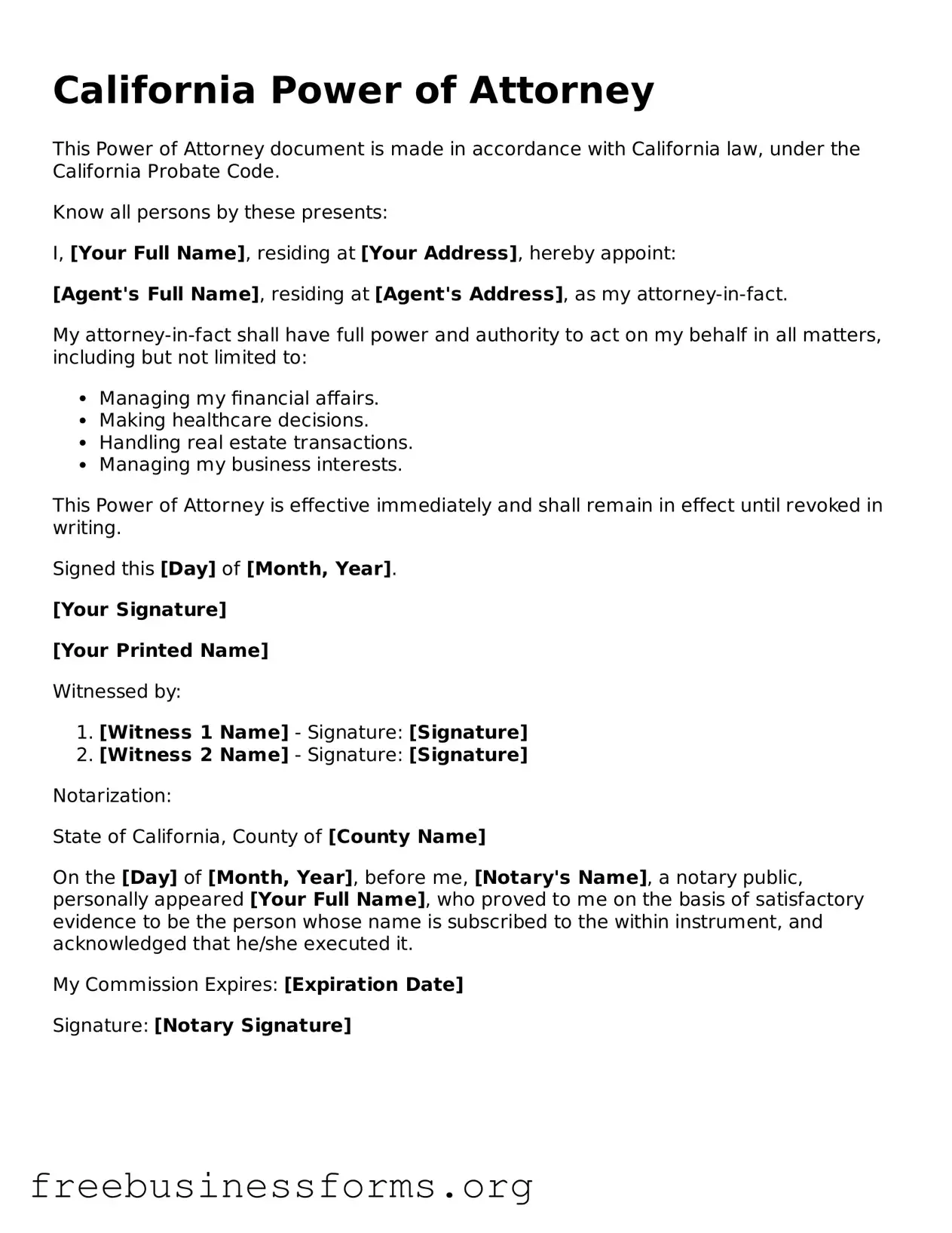California Power of Attorney
This Power of Attorney document is made in accordance with California law, under the California Probate Code.
Know all persons by these presents:
I, [Your Full Name], residing at [Your Address], hereby appoint:
[Agent's Full Name], residing at [Agent's Address], as my attorney-in-fact.
My attorney-in-fact shall have full power and authority to act on my behalf in all matters, including but not limited to:
- Managing my financial affairs.
- Making healthcare decisions.
- Handling real estate transactions.
- Managing my business interests.
This Power of Attorney is effective immediately and shall remain in effect until revoked in writing.
Signed this [Day] of [Month, Year].
[Your Signature]
[Your Printed Name]
Witnessed by:
- [Witness 1 Name] - Signature: [Signature]
- [Witness 2 Name] - Signature: [Signature]
Notarization:
State of California, County of [County Name]
On the [Day] of [Month, Year], before me, [Notary's Name], a notary public, personally appeared [Your Full Name], who proved to me on the basis of satisfactory evidence to be the person whose name is subscribed to the within instrument, and acknowledged that he/she executed it.
My Commission Expires: [Expiration Date]
Signature: [Notary Signature]
